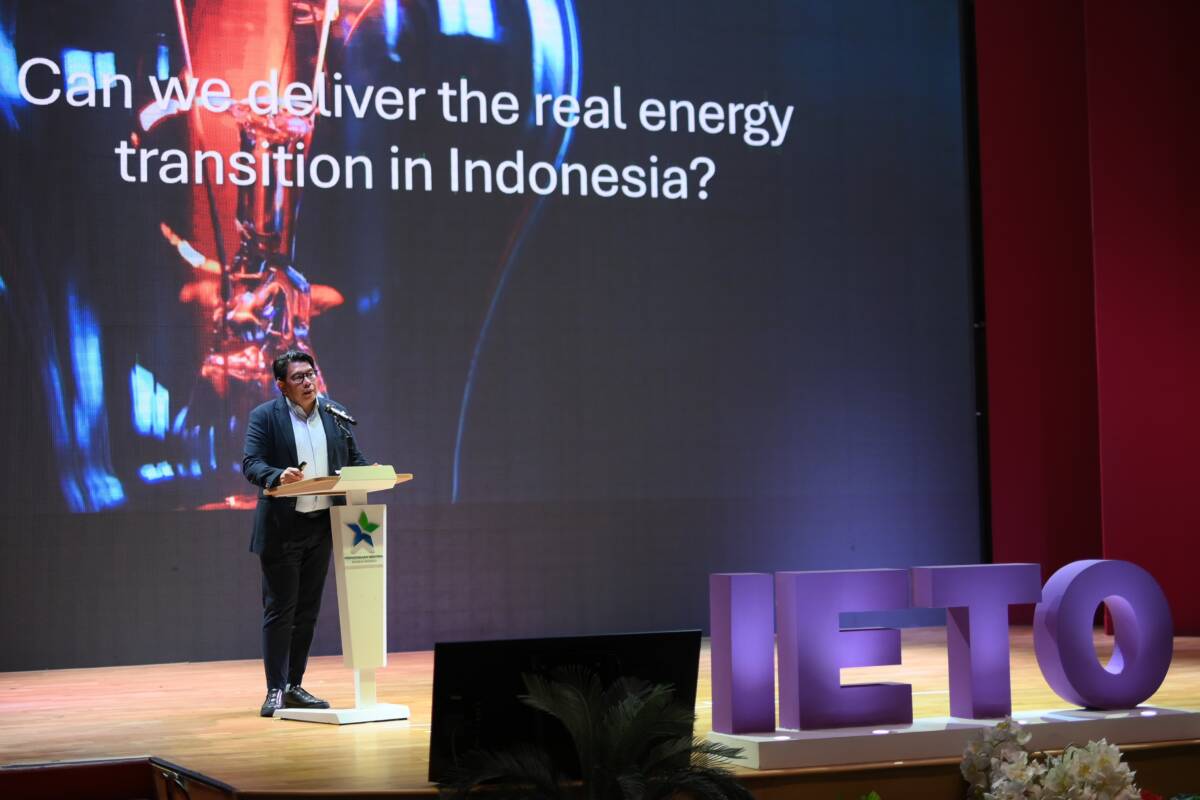Jakarta, February 14, 2025—According to Government Regulation No. 79/2014, Indonesia needs to achieve a renewable energy mix target of 23 percent by this year. However, the Energy and Mineral Resources Sector Outcomes 2024 report shows that the realization of this target is unlikely. One indicator is that investment in the new renewable energy and energy conservation (EBTKE) sector in 2024 will only reach USD 1.8 billion of the USD 2.6 billion target.
The Institute for Essential Services Reform (IESR) assesses that the poor investment climate is the cause of the renewable energy investment target not being achieved. This condition is caused by various structural factors, such as the structure of the electricity industry, policies and regulations that lack quality, country risk, and preference for coal through the domestic market obligation (DMO) policy.
For this reason, IESR encourages the government to improve the renewable energy investment climate by improving the quality of policies and regulations, reforming the coal DMO policy, energy subsidies, and the power plant procurement process at PLN. In addition, IESR also emphasizes the importance of simplifying licensing, fiscal incentives to increase the bankability of renewable energy projects, and ease of access for consumers to obtain renewable energy.
IESR also highlighted the importance of transparency and accountability in the 2024 ESDM Sector Achievement report, including the 2025 target and data on the 2024 renewable energy mix achievements. Based on MEMR data, the renewable energy mix achievement in 2024 increased by one per cent from 13.9 per cent in 2023 to 14.1 per cent in 2024. This figure is relatively small compared to the mixed target that must be achieved by 2024, which is 19.5 per cent. IESR has repeatedly encouraged the government to evaluate and prepare innovative strategies to break the stagnant achievement of the renewable energy mix target.
IESR Executive Director Fabby Tumiwa stated that the government can utilize international partnerships such as the Just Energy Transition Partnership (JETP) to finance strategic renewable energy projects. Funding commitments from IPG and GFANZ member countries must be mobilized to attract more significant investment. However, he highlighted that the disbursement of JETP funding has been slow due to the government’s lack of speed in preparing bankable project proposals, reforming key policies that have hindered renewable energy development so far, and overcoming the uncertainty of JETP implementation after the change of Government of Indonesia in October last year.
“Although the 23 per cent renewable energy mix target is planned to be shifted to 2030, the government should make every effort to increase the renewable energy mix this year. Amid budget cuts this year, the government should optimize private and public investment in renewable energy. Private investment for energy generation is carried out through PLN, including for utility-scale solar PV projects and rooftop solar PV investment by industrial, business and household consumers, which does not require government subsidies but requires ease of licensing and a larger PLTS quota by PLN” Fabby said.
Fabby also appreciated the government’s decision to seek early retirement of the Cirebon CFPP and replace it with 700 MW of solar power plants with battery storage, 346 MW of solar power plants, 1,000 MW of wind power plants, and 12 solar power plants. However, he emphasized that the final decision process for retiring the Cirebon CFPP, which has been ongoing since 2022, has not been completed until now.
The early retirement process of Cirebon I CFPP serves as an essential reference and learning opportunity for the early retirement of several CFPPs that are more technically and economically advantageous for PLN than continuing their operation. According to the IESR study, there are 4.6 GW of power plants that have the potential to end their operations by 2025,” Fabby said.
Fabby also encouraged the Indonesian government to start planning to limit coal production, whose trend has increased rapidly in the last 10 years. This year, national coal production reached 836 million tons, exceeding the target of 710 million tons. According to him, the increase in coal production signals a weakening commitment to Indonesia’s energy transition.
“The government needs to calculate the benefits and costs of phasing out coal-fired power plants (CFPP) operations until 2050, especially the impact on electricity production costs and electricity subsidies in the long term. The IESR study shows that in 2030, electricity production costs can be cheaper if renewable energy plants contribute more than 30 per cent to the electricity system,” Fabby said.
Regarding renewable energy investment that is still below the target, Fabby emphasized the importance of synergy between the Ministry of Energy and Mineral Resources, the Ministry of Investment and Downstream, the Ministry of Finance, the Ministry of SOEs, Bappenas, and the Ministry of Foreign Affairs to create more harmonious and attractive policies for investors.

